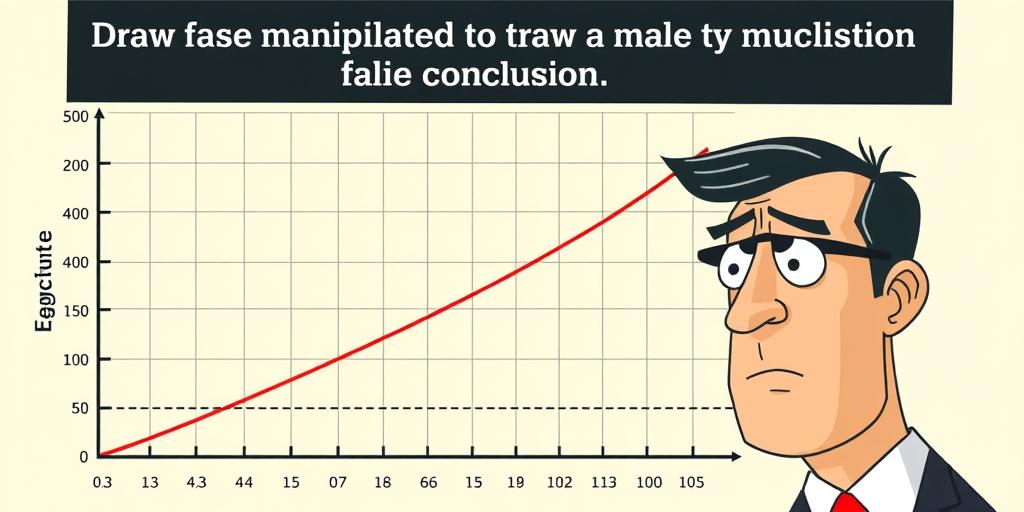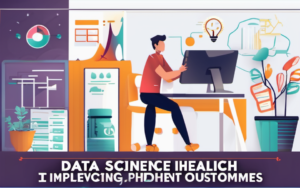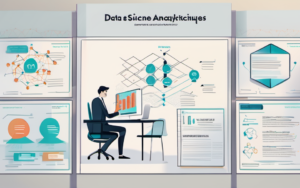Data science has revolutionized countless industries, offering powerful insights and predictive capabilities. However, the allure of data-driven decision-making can sometimes overshadow the potential pitfalls. When data science misleads, the consequences can be significant, impacting individuals, organizations, and society as a whole.
The Perils of Misleading Data Science
Data science, despite its promise, is not immune to errors and biases. These shortcomings can lead to inaccurate results and misleading insights, ultimately undermining the reliability of data-driven decisions.
When Data Lies: The Pitfalls of Bias and Inaccuracy
One major challenge in data science is the presence of bias, which can creep into data collection, model development, or even the interpretation of results. Biased data science models can perpetuate existing inequalities and lead to unfair outcomes. For example, a hiring algorithm trained on historical data might inadvertently favor candidates from certain demographics, perpetuating existing gender or racial disparities.
Inaccuracy can also stem from flawed data collection, poorly designed models, or even simple human error. Inaccurate data science predictions can lead to costly mistakes and missed opportunities. For instance, a retail company relying on inaccurate sales forecasts could end up with excess inventory or stock shortages, impacting its profitability.
The Human Factor: Misinterpretation and Overreliance
While data science offers valuable insights, it’s crucial to remember that it’s ultimately a tool. Misinterpretation of data science results can occur when users lack a thorough understanding of the underlying methodology or fail to consider the limitations of the data.
Moreover, overreliance on data science models can lead to a dangerous disconnect between human judgment and data-driven decision-making. This can be particularly problematic in complex situations that require nuanced understanding and contextual awareness, such as medical diagnosis or legal proceedings.
Consequences in Action: Real-World Examples
The impact of misleading data science can be seen in various domains, often with serious consequences for individuals and society.
Healthcare: Misdiagnosis and Ineffective Treatments
Data science is increasingly used in healthcare to diagnose diseases, predict patient outcomes, and develop personalized treatments. However, data science errors in healthcare can have life-altering consequences. For instance, an algorithm used to identify patients at risk of heart failure might misclassify individuals, leading to delayed diagnosis and potentially worsening outcomes.
Finance: Algorithmic Bias and Unfair Lending Practices
Data science is also used extensively in finance, from credit scoring to investment strategies. However, algorithmic bias in financial models can perpetuate economic inequality. For example, a loan approval algorithm trained on historical data might unfairly deny loans to individuals based on factors like race or zip code, leading to discriminatory lending practices.
Criminal Justice: Predictive Policing and Discriminatory Outcomes
Data science has been employed in criminal justice to predict crime and allocate resources. However, biased data science models in law enforcement can lead to discriminatory outcomes. For example, predictive policing algorithms trained on historical arrest data might unfairly target certain neighborhoods or demographics, exacerbating existing racial disparities in the criminal justice system.
Mitigating the Risks: Building Trust in Data Science
Addressing the risks associated with misleading data science requires a proactive approach that prioritizes ethical considerations, transparency, and human oversight.
Transparency and Explainability: Understanding the Black Box
One critical step is promoting transparency and explainability in data science models. This means making the underlying logic and decision-making processes of data science algorithms understandable to both experts and non-experts. By understanding how models arrive at their conclusions, users can better identify potential biases and inaccuracies.
Ethical Considerations: Data Privacy and Responsible Use
It’s essential to prioritize ethical considerations in data science, including data privacy and responsible use. This involves ensuring that data is collected and used ethically, minimizing the potential for harm and upholding individual rights.
Human Oversight: Balancing Automation with Judgment
While data science can automate many processes, it’s crucial to maintain human oversight and judgment in data-driven decision-making. This means ensuring that humans are involved in reviewing data science results, interpreting findings, and making final decisions, particularly in sensitive contexts.
Moving Forward: A Call for Responsible Data Science
Building a future where data science serves as a force for good requires a collective effort to address the challenges and promote responsible use.
Education and Awareness: Fostering Critical Thinking
Education and awareness about data science are essential for fostering critical thinking and promoting responsible use. This includes teaching individuals how to critically evaluate data science results, identify potential biases, and understand the limitations of data-driven insights.
Collaboration and Regulation: Building a Framework for Trust
Collaboration and regulation are crucial for establishing a framework for trust in data science. Industry collaboration can help to develop best practices and standards for ethical data collection, model development, and use. Regulation can provide guidelines and oversight to ensure that data science is used responsibly and ethically.
The Future of Data Science: A Path Towards Ethical and Equitable Applications
The future of data science hinges on our ability to leverage its power while mitigating its risks. By embracing transparency, ethical considerations, and human oversight, we can pave the way for a data-driven future that is both innovative and responsible.




